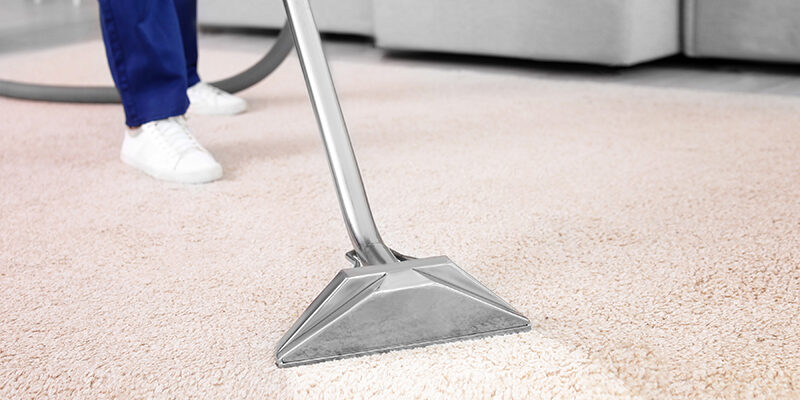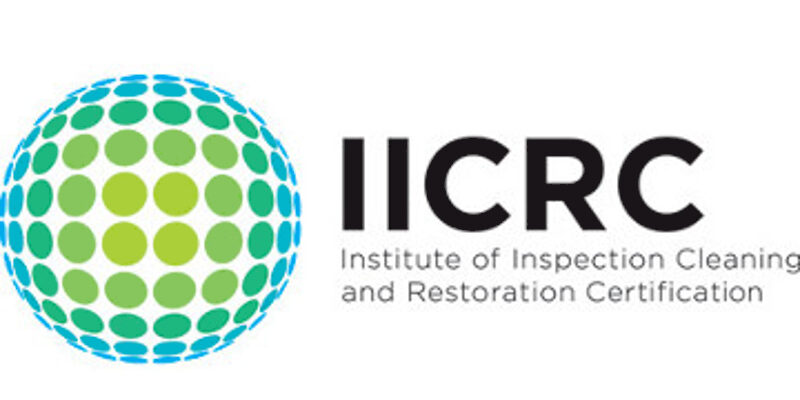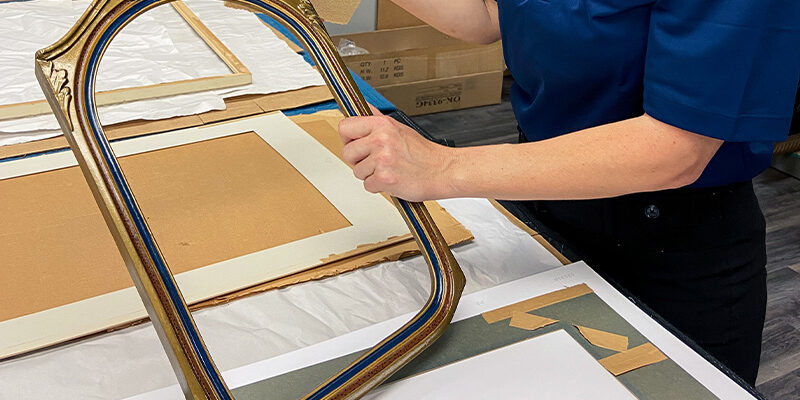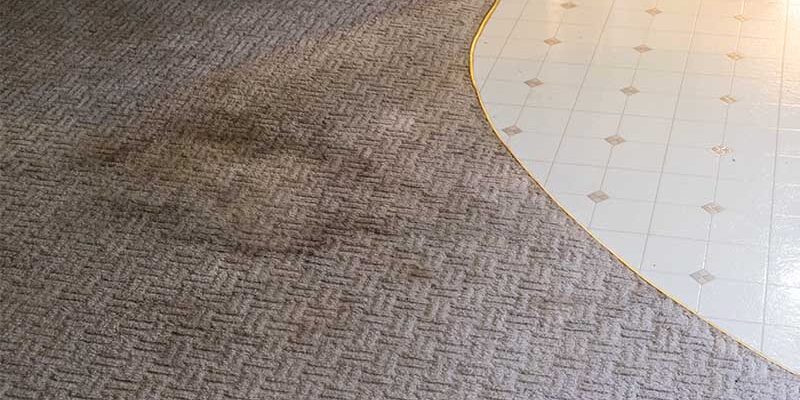Chemically Sensitive Rugs
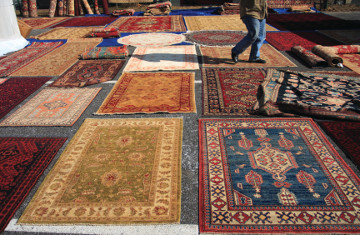
Wool organizations have worked at identifying chemical solutions that are safe for use on wool rugs by rug cleaners.
There has, however, been little or no attention to the chemical solutions used on rugs before they are sold and the harm they cause to the wool rugs before they even reach rug cleaners.
Most rugs are given a light chemical wash after being woven. Although each country has its own “special sauce” for this purpose, many use a low percentage  chlorine bleach solution.
chlorine bleach solution.
They do the wash in order to help wash away impurities, rinse away excess dye and help soften the colors a bit by dissolving the outer wool cuticle layers.
Wool is a hair fiber, and this type of treatment is not unlike what is done when someone wants to add to their own hair some highlights, more sheen or even more dramatic color results — if they are so inclined.
Most wool treatments are considered fairly harmless to wool fibers. There are, however, some treatments that are more extreme in an effort to create a “wow” initial result with a rug, but with consequences that occur later in the rug’s life.
And sometimes those “consequences” pop up during the cleaning process by an unsuspecting rug cleaner.
Let’s discuss the more common chemical washing treatments, what they are, how to identify them and the dangers they may pose to rug cleaners.
Luster wash
The purpose of the “luster wash” is to make a rug have more sheen to it, and to soften the feel of the wool pile. The solution helps to dissolve some of the outer cuticle layers of the wool fibers to help them to reflect more light and have a softer touch.
A light luster wash is given to most rugs before they go off to be sold. However, some countries give aggressive luster wash treatments in order to make the wool look almost silk-like in the way that it shines.
Rugs woven in China and Pakistan can have a strong light/dark direction to them, which is maximized by these chemical treatments. Rug owners sometimes mistakenly believe their wool rug is silk due to this sheen.
How to identify luster washed rugs
Wool rugs that look like silk are a sign of a heavy “luster wash” processing. There is a very strong light and dark direction. When you grin open the fibers, you will see that the base of the fibers are darker than at the tips. It is almost as if they have been “frosted” at the tips like highlights in hair.
Antique wash
Sometimes the chemical treatments are not meant to make a rug shine more brightly, but are meant to “age” the rug to make it appear to be older than it is.
“Antique wash” is a more aggressive treatment to not just eat away at the wool cuticle layers, but also to help fade/mute the colors substantially.
True antique rugs have a certain patina and mellowing of the colors that comes from age and use. In an attempt to try to attain that same result in a new rug, there is aggressive degradation of the rug that can lead to an almost disappearing of the colors as well as wearing down of the fibers.
As with hair that has been too aggressively treated with bleaches or peroxides, the strand can break, become more brittle and can lose the ability to hold color. Wool is no different.
Poorly executed chemical processing can make a rug’s original colors disappear. It can also create a rough and brittle texture to the rug.
In some new rugs where this chemical antique wash work has been too aggressive, the rugs are sometimes dipped in ink to try to create something decorative from a rug that has essentially been burned of its wool content.
How to identify antique washed rugs
Wool rugs that have been given an “antique wash” will have a strong color change from the back of the rug to the front. In some contemporary rugs with this processing, both sides are processed, so grin the rug fibers open to see the original color in the middle of the fibers. If that original color is very strong, then you will know this rug has been chemically treated.
Tea wash
Other rugs today are “mellowed” by covering them up in an over-dyeing process referred to as “tea wash” or “herbal wash” treatments.
In some countries, rugs are packed in tea leaves to help give this type of gold/brown hue naturally to help soften the rug’s colors. In most cases today, the rug is “tea washed” using solutions that can range from natural dyestuffs to chemical solutions such as potassium permanganate.
The quality of this chemical treatment varies as much as with the other treatments. You have low-end applications, which are essentially sprayed on one side of the rug only, and higher-end applications that have the rug dipped in the solution to try to attain an even result.
I refer to this as a “spray-on tan” for rugs, because they are not permanent, and can be blotchy if low quality.
How to identify tea washed rugs
Wool rugs that have been “tea washed” have an overall gold or brown tone to them. The fringes will be beige instead of white, and this can wash away with fringe cleaning solutions, so be careful. If you grin open the rug fibers, they will be darker at the tips instead of lighter.
Dangers from chemically washed rugs
There are four main concerns with cleaning technicians attempting to deal with chemically washed rugs.
1. Color fade and change from sun or spot removers
These rugs fibers, especially the luster and antique washed ones, are damaged fibers. Those more aggressively-treated rugs become much more sensitive to sun fade and also more prone to color change with use of some spotting solutions.
Avoid drying these rugs in direct sunlight. Always test spot removers in small areas before attempting any larger use.
2. Pile distortion and fiber breaking
High sheen wool rugs have fibers that can easily get distorted and break from the use of extractors, brushes or other tools. They also can be damaged from foot traffic in a way that creates shadowing that may not be correctable with washing.
Avoid heavy scrubbing on high sheen wool rugs. Make sure that your extraction strokes are with the pile direction, not against it. Wands with a Teflon head will help prevent fiber breaking. Use softer brushes for grooming, and a gentle hand with tools going with the grain. Never rake the field of these rugs with a carpet groomer.
3. More susceptible to staining
With luster and antique washed rugs, the protection of their wool cuticles has been compromised, and this makes them more susceptible to permanent staining. Be aware of this before you promise a client that spots/spills are “no problem.” They may be a problem on a chemically washed rug.
With tea washed rugs, it is not unusual to have a spot remover remove the brown dye treatment and create a bright white area on the rug. Remember, these applications are not permanent, so stay gentle in your cleaning solution choices.
4. Odor and sensitivities.
Some chemically washed rugs have residue of their treatments absorbed inside the rug’s cotton foundation fibers. I have had several consumers contact me regarding having chemical sensitivities to “tea washed” rugs from India after flood incidents. These rugs tend to have thicker foundation wefts that may not release the solutions as easily as thinner fibers would.
If a rug is woven (you can see the knots on the back side of the rug), most odors can be removed through fully washing the rug and using the appropriate solutions targeting the type of contaminant causing the odor.
Inspection is the best protection
When a rug is covered up in soil, it can be a surprise when cleaning uncovers “problems” like pile damage, dye damage or discolorations due to past chemical wash treatments.
The more time you spend inspecting a rug, the less time you will spend trying to correct problems that are not your fault.
Determine if a rug has been chemically washed, and then discuss those issues with the client before the wash. When you address the issues beforehand, you are educating the client, and also protecting yourself in the process.
Lisa Wagner is a second-generation rug care expert, NIRC Certified Rug Specialist and an owner of K. Blatchford's San Diego Rug Cleaning Company. Her blog at www.RugChick.com is the most visited and referenced website on rug education in the cleaning industry. If you would like more information about her online and hands-on rug courses, please visit www.RugClass.com.


